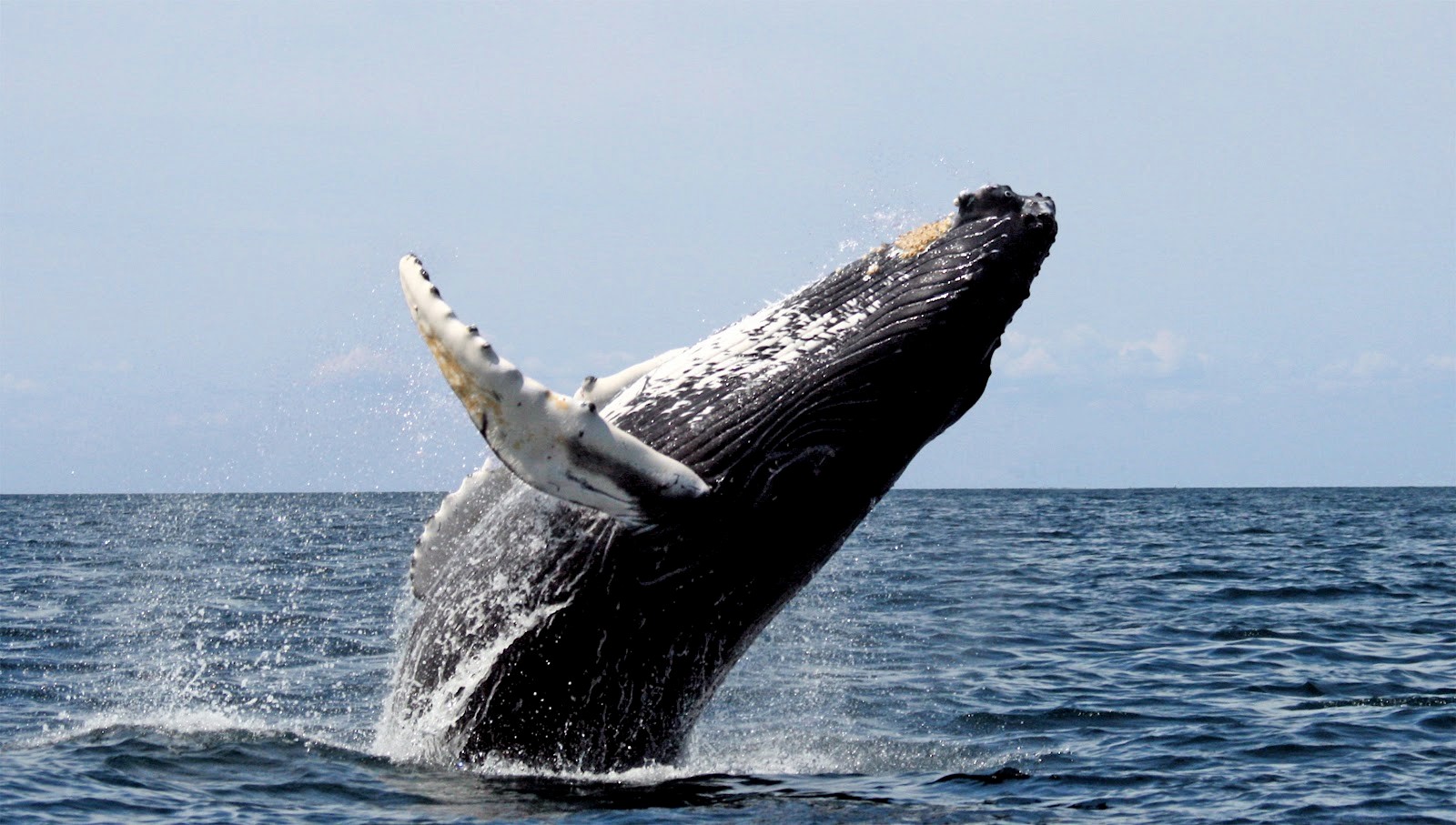By Emma Joy Goldberg
Today’s top pop music charts include tracks from Ariana Grande, Post Malone, Harry Styles and Billie Eilish. But what if I told you that just like humans, humpback whales have their own top hits? Yes, you read that correctly! Male humpback whales have been dubbed the “serenaders of the sea” and scientists have long been fascinated by their complex songs. The leading hypothesis among scientists is that the males use their songs to attract females, but males also switch up their tunes when another male is nearby. Scientists additionally hypothesize that males may have certain songs to sing when they feel threatened in order to warn others of possible danger.
First, let’s get a little background on humpback whales!
The humpback whale is part of the cetacean family, which also includes other whales, dolphins and porpoises. Cetaceans are defined as mammals who have adapted to life exclusively in the water. From here, cetaceans can be classified as toothed or baleen. Our singing friends, the humpback whales, are a species of baleen whale, meaning they don’t have any teeth in their mouths. Instead, they have long strips of baleen that help to filter out their favorite foods! Baleen is made up of the same protein that make up your fingernails and hair. A humpback whale’s diet consists of krill, and small fish and each whale can eat up to 1 and ½ tons of food per day — that’s almost 3,000 pounds!
The humpback whale was named for the shape of its back fin and the way it looks when its diving. Humpback whales range in length from 49-60 feet and can weigh up to 50 tons! Humpback whales can be found in every ocean around the world, following specific migration patterns throughout the year: spending summers in polar waters, and heading to the tropics for winter!
Now that we know some humpback whale basics, let’s talk about their most interesting skill: singing.
 Dr. Ellen Garland, from the University of St. Andrews, researches humpback whale songs and explains that the songs are organized much like the songs we hear on the radio. Whale songs start out with a few basic units: moans, groans, whoops, and barks. These units are equivalent to the pitches, notes and rests that form the basis of human songs! When arranged in a sequence, these basic units make a phrase. These phrases are then repeated and rearranged to make themes, which are further stuck together to make a song! You can think of the different “themes” the way you think of the verses and choruses in songs you listen to!
Dr. Ellen Garland, from the University of St. Andrews, researches humpback whale songs and explains that the songs are organized much like the songs we hear on the radio. Whale songs start out with a few basic units: moans, groans, whoops, and barks. These units are equivalent to the pitches, notes and rests that form the basis of human songs! When arranged in a sequence, these basic units make a phrase. These phrases are then repeated and rearranged to make themes, which are further stuck together to make a song! You can think of the different “themes” the way you think of the verses and choruses in songs you listen to!
Every population of male humpback whales has their own specific and characteristic song which changes over time as the whales make small changes to their themes and phrases. These changes are normally slow and small. But when male humpback whales from different populations cross paths, true “song revolutions” occur. Dr. Garland compares these revolutions to the way a fashion trend or internet meme spreads.
Song revolutions normally occur when humpback whales from West Australia cross paths with those from East Australia. The song from the West is new and exciting, so the Eastern humpbacks are quick to ditch their own tune and take up something new! Learning a new and different song may also help attract attention from female humpback whales.
So the next time you’re scrolling through Spotify or Pandora, consider looking for the “Humpbacks Greatest Hits”!
Edited by Rachel Battaglia and Jenna Beam

